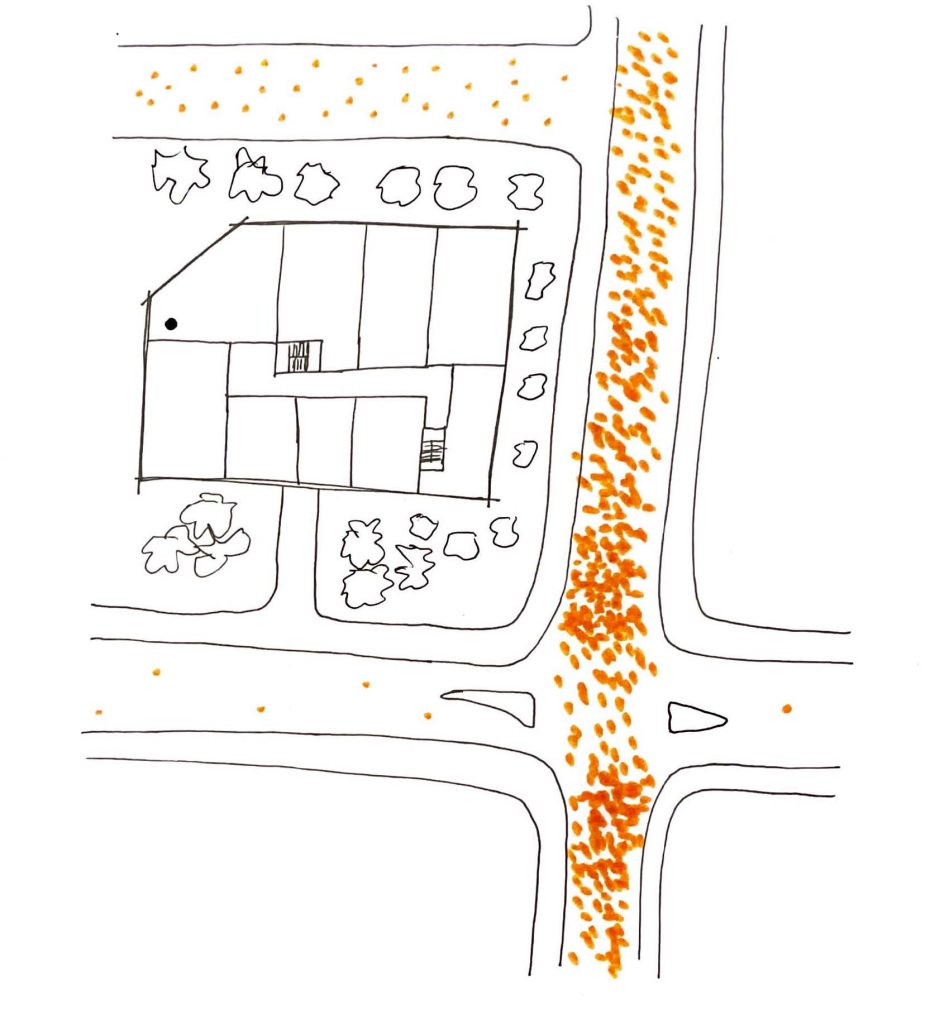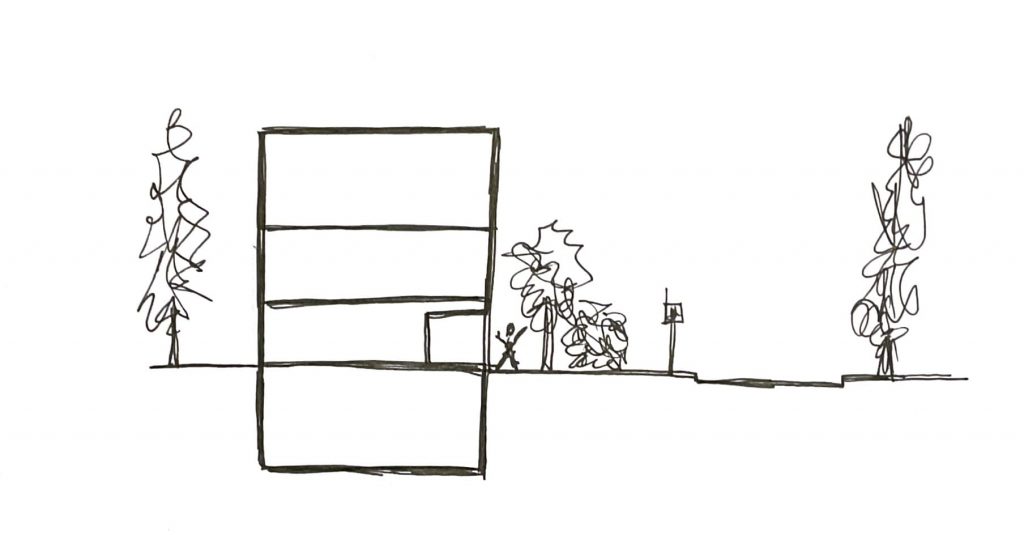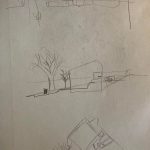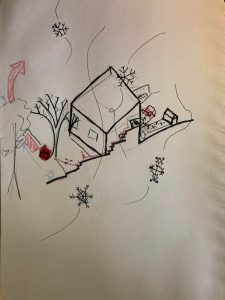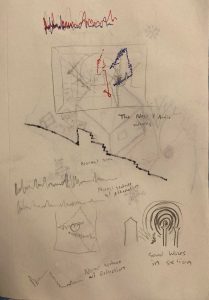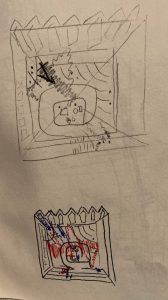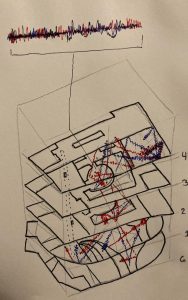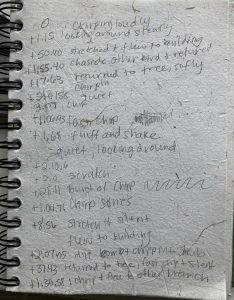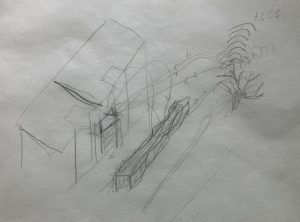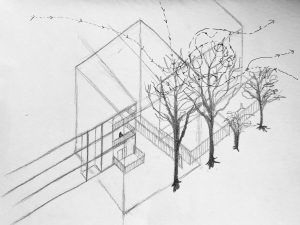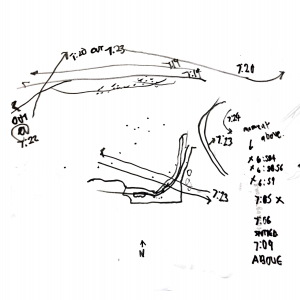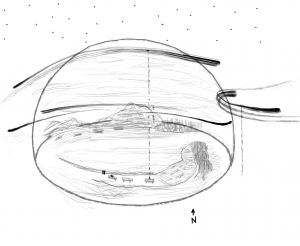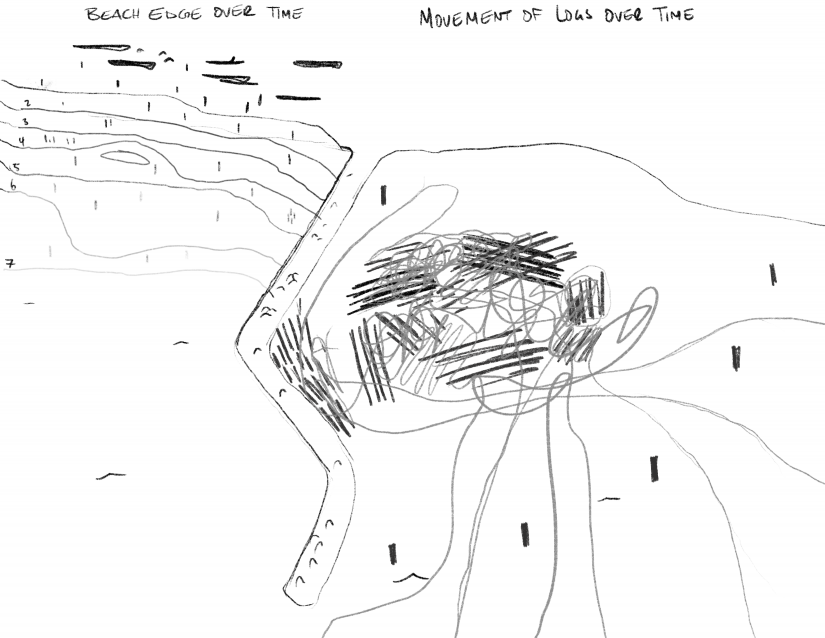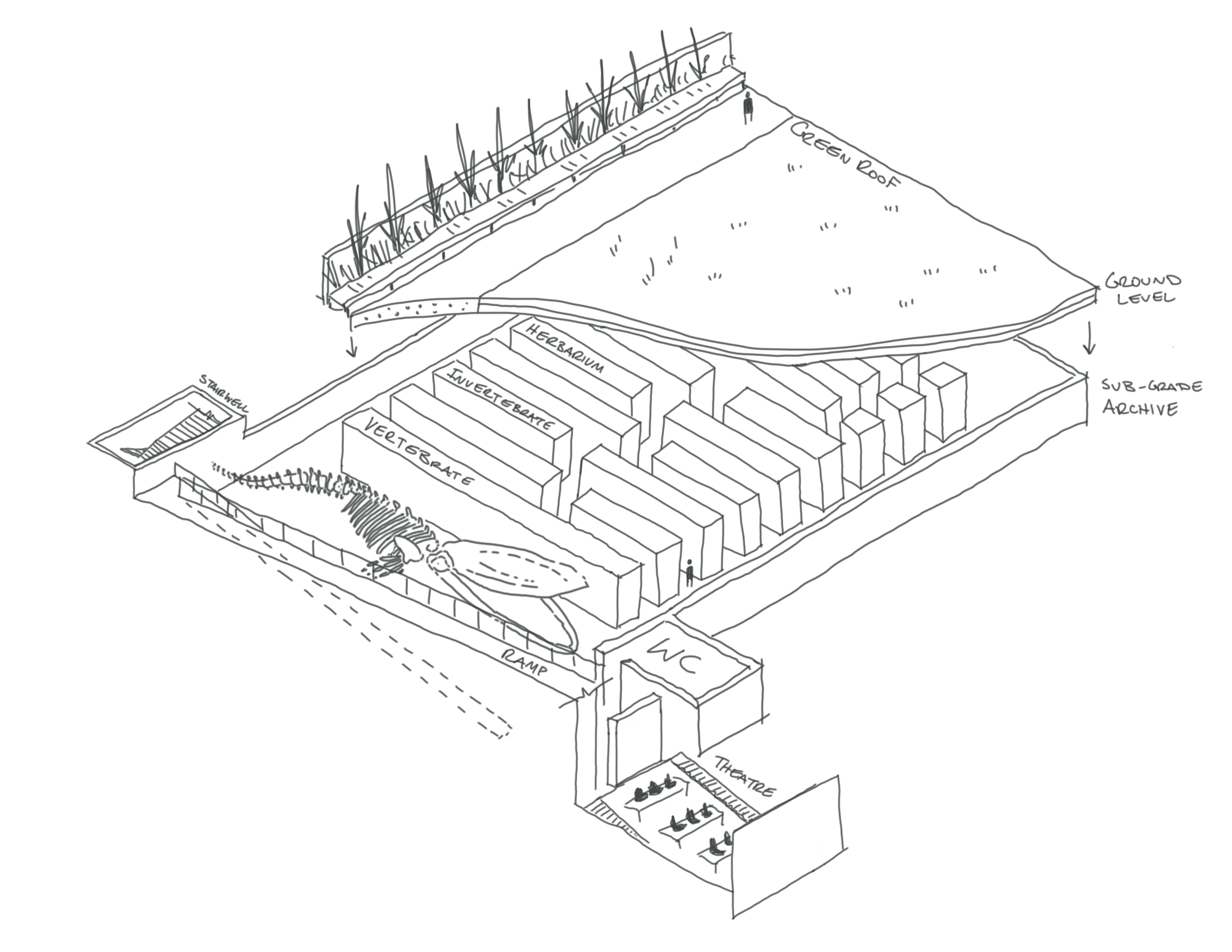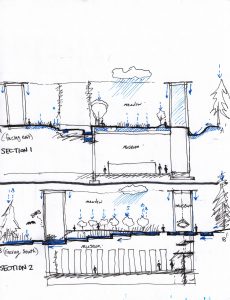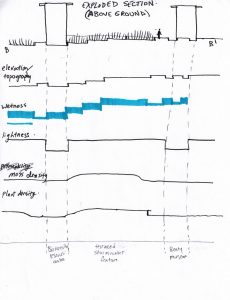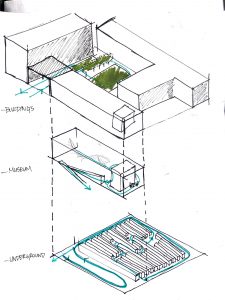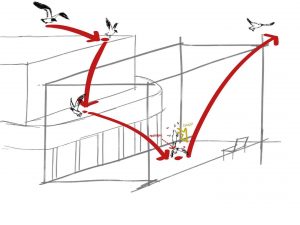In-class exercise: A drawing of a route from my home to the street, showing temperature change from outside to inside. In this exercise I learned that a multis-ensorial map can help reveal microclimates or other invisible things that wouldn’t otherwise be obvious without having observed them using other the senses (besides sight).

A visit to CIRS Building. I started with plans and a section to get a lay of the land. (It was raining so the paper got wet).



I drew the plants in the wastewater treatment plant on site at the Solar Aquatics Lab. Some of the plants seemed droopy and unhealthy, while others reached for the light. I also started with some mind-mapping of where the water moves through the building/landscape system. Putting the processes and cycles into words first helped to plan out and simplify the final drawing.

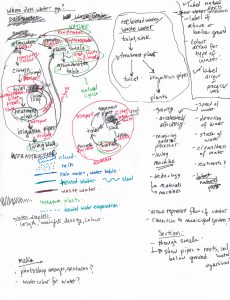
Draft sketches. Setting up the axo and choosing the section cuts was the trickiest part.
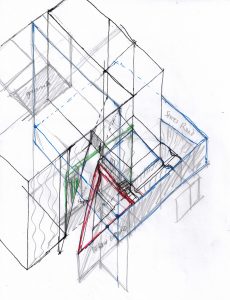
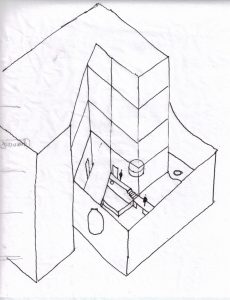
Water at, above, and below ground: The three colours of arrows represent different types of water: rain water, waste water and treated water. The diagram shows how rain water collects on the white roof, flows through the built infrastructure (roof, cistern, toilets, on-site treatment plant, irrigation system, and bioswale) and through natural system components (atmosphere, water table, soil and plants).

